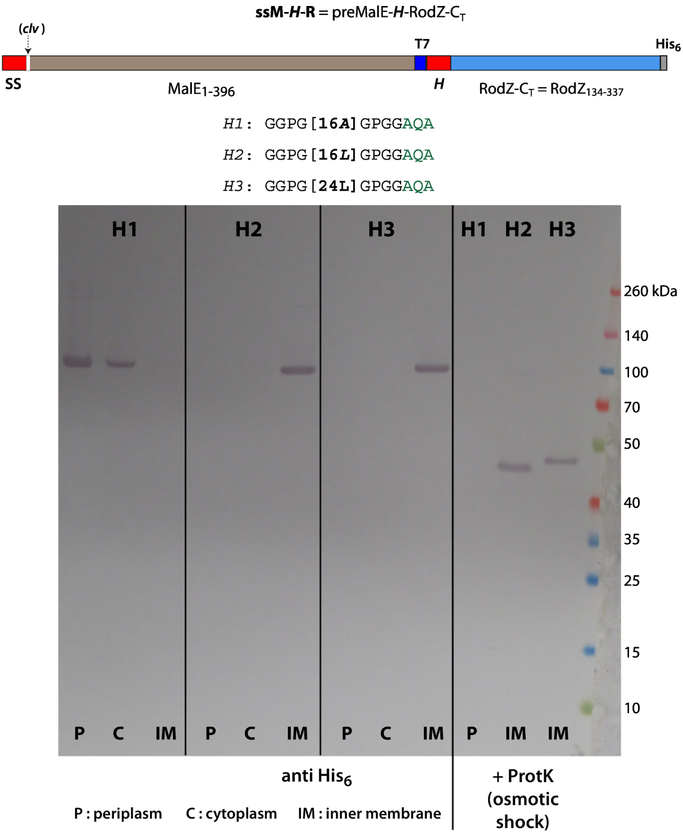Figure 7.
These results, obtained using the ssM-H-R, construct show that SecYEG can insert proteins containing very long and greasy TM segments. Despite the presence of a long greasy segment far downstream from the N-terminus, SecA identifies the sequence as a target via the preMalE signal sequence at the N-terminal. If the H-segment is polyalanine, the protein is secreted and found only in the periplasmic and cytoplasmic fractions. For H = 16 and 24 Leu, the protein is found only in the inner membrane fraction, which indicates that SecYEG is capable of incorporating highly hydrophobic segments into the membrane. Osmotic shock followed by proteinase K (ProtK) treatment (right-hand lanes labeled H1, H2, H3) hydrolyzes the periplasmic MalE fragment, leaving the RodZ component as an N-terminal anchored single-span membrane protein. E. coli BL21 cells grown at 37 °C in SOC media augmented with glucose, MgCl2, and MgSO4. See Materials and Methods.

